Under The Skin
Joachim Hérissé on Skinned
Nominated for the New Critics & New Audiences Award, Joachim Hérissé elaborates on his stop-motion horror fairytale for adults.
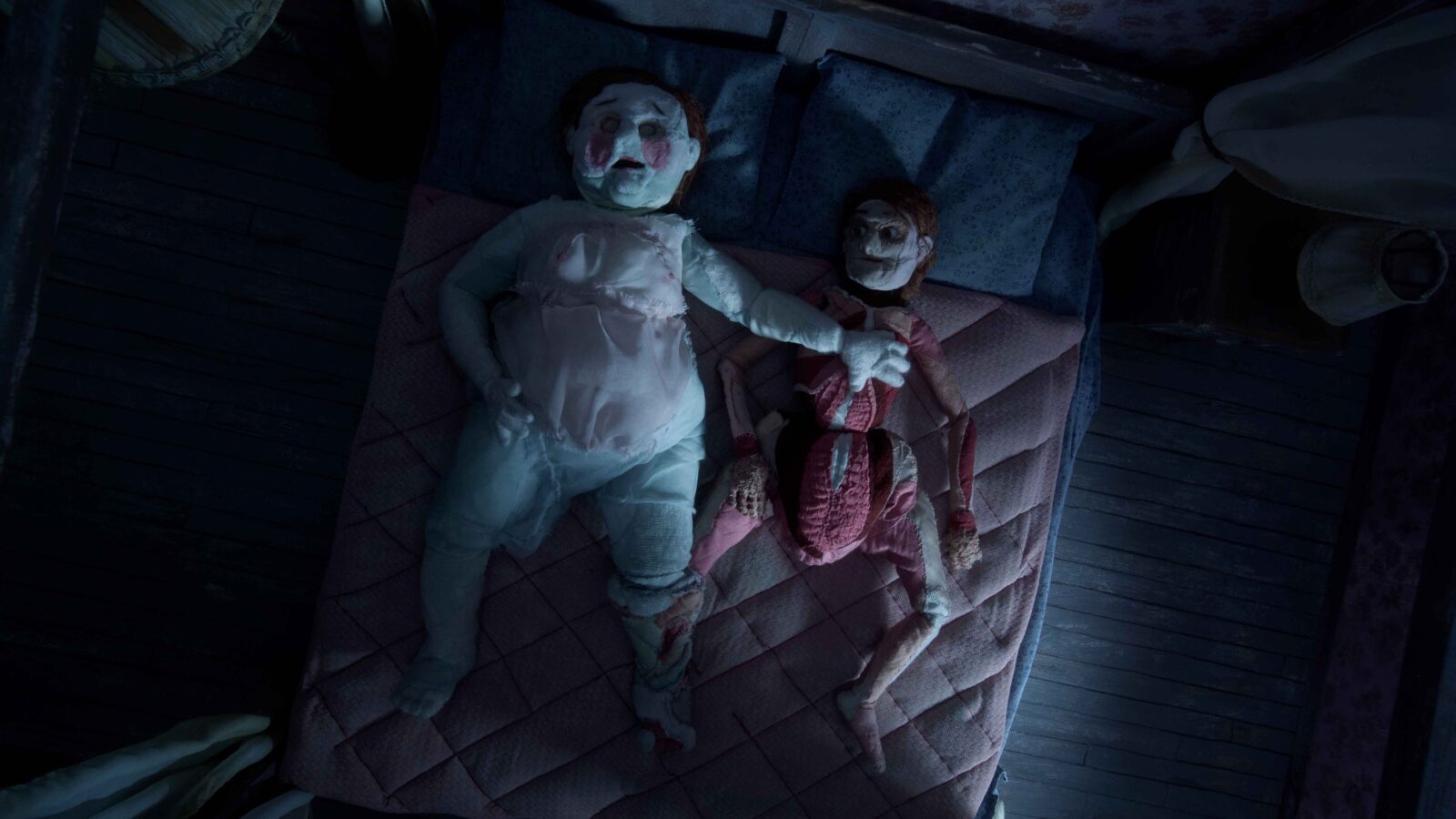
I meet Joachim Hérissé on a freezing January afternoon in Paris, just as snow begins to fall on the bustling city streets. Huddled in the window of a lively café in the city’s 14th arrondissement, we watch shivering tourists queue for the catacombs while Hérissé-animator and filmmaker behind the French-language short Skinned (2022)—talks about his relationship to the French capital. “It’s a mixed feeling, paradoxical. It’s essential for the film industry,” he says, reaching forward into empty space with his expressive, knotty hands as though to better communicate his point, “and that’s why I lived here for twenty years. But twenty years is enough.” After two decades spent in the animation and visual effects industry in Paris, he returned to the west of France, where he was born and now resides, and which partially inspired the haunting backdrops and sense of isolation in Skinned.
Hérissé’s short is an anxious, stop-motion nightmare populated by uncanny textile dolls. The film follows two sisters, conjoined twins who are stranded in a desolate landscape beside a wide river. One, petite and restless, appears to have been flayed. Her sinew and bone are exposed in a way that’s just-about-bearable to the eye thanks to the clever design of Hérissé’s marionettes. This twin longs for escape: she obsesses over a boat that drifts enticingly along the river. She rushes desperately to jump aboard, but is constantly held back by her overbearing sibling. Large, soft and swollen, the second sister is a slave to her stomach. Permanently hungry, she forces her weaker twin to collect, skin, and prepare the rabbits they keep in a looming tower of trembling hutches. The situation, already tense, quickly devolves into feverish anxiety, disturbing dreams, and violence.
Skinned, which marries Cronenbergian body horror with Burtonesque figures to craft a twisted poetic tale, led to enthusiastic reviews in Hérissé’s native France. This is far from his first interview. And yet, Hérissé—who is in his forties and tall, with a thick black moustache and generous stubble flecked, here and there, with grey—offers full, thoughtful answers in a warm and gentle voice. He seems at once entirely at ease reflecting on a work which, by his own admission, depends heavily on his private anxieties and his own subconscious, and yet at the same time cautious and controlled in his responses.
“Ease” is something that comes up a lot in our discussion, which took place in French. Hérissé has always struggled with confidence, he says. This might be because, as a filmmaker, he is almost entirely self-taught. “I was always into cinema. I started off making little shorts with my friends and family on my dad’s camcorder. But no one ever wanted to finish what we started.” He laughs about it now but, at the time, he found it deeply frustrating. It led to an interest in animation.
While still a teenager, Hérissé taught himself professional 3D animation software. It freed him to dream up the kind of films that his friends never wanted to finish. By the age of 20, it led him to work in the French entertainment industry, where eventually he focused on programming for children. But if 3D animation brought creative liberty, to an extent, as well as a way to earn a living, Hérissé ultimately found it restrictive. Manipulating 3D figures under artificial lighting made him long for contact with the material world: with reality, as he puts it, in all its physical fragility.
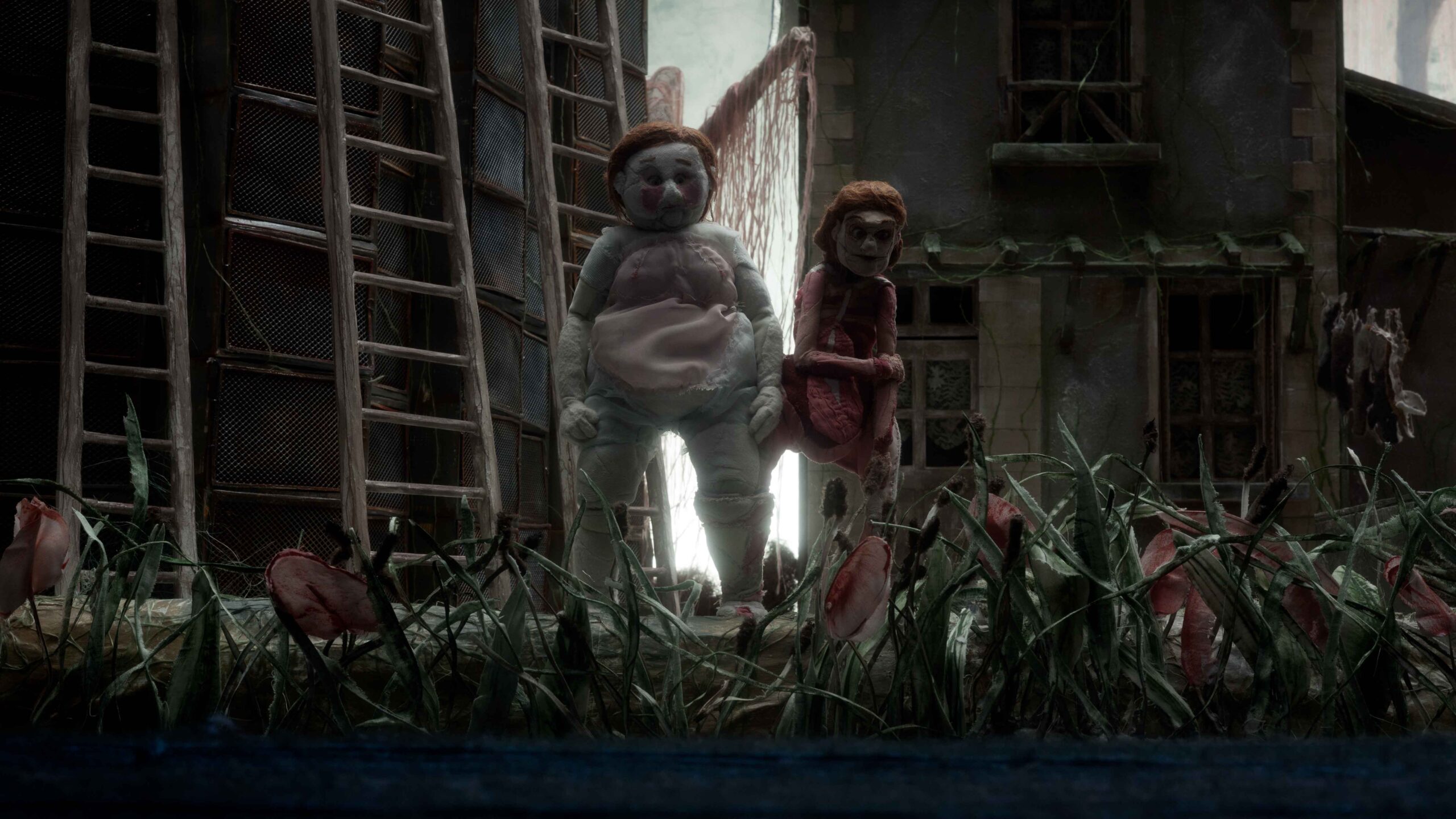
Skinned
It’s easy to see why. Hérissé’s gestures often recall the stop-motion animated characters of his work: elastic, communicative, his body reacting if not faster than his speech, then at least with less evident reflection. He leans in throughout our discussion, pausing considerately at times to make sure that I’m keeping up, probing my expression and adapting accordingly, all while sipping hurriedly at his café allongé, taken black. It’s difficult to imagine him trapped behind a screen all day.
This interest in materiality eventually led to Skinned, where the body, albeit in textile form, is the centre and source of all concerns. To make the film, though, required a journey that lasted almost ten years. Hérissé spent months trying out different scripts, in subtly different styles, learning along the way and getting help, in part, from institutions like the French CNC, the Centre national du cinéma et de l’image animée. Given the notorious expense involved in animation, financial difficulties were inevitable. Hérissé often felt like an outsider: in a country where most young animators now pass through film schools, he was a quirky autodidact from another generation. Technical troubles followed. Originally conceived as a 2D animation, Skinned was then briefly imagined as a kind of shadow play, before its creator realised that his characters needed volume, a sense of mass. He settled on marionettes.
“Initially, I tried to make them myself,” he says, chuckling at the notion now. But he couldn’t find a way out of the conventional, the already-seen and already-done. “I’m always looking for that sense of surprise, something that escapes from the ordinary, something new,” he adds later, talking about his admiration for contemporary Korean cinema and its genre-bending pleasures. In the case of Skinned, he found that shock of the new in the work of French sculptor Aline Bordereau, and especially her Bœuf écorché. Using textile, wood, cardboard, and iron, Bordereau’s piece represents a flayed piece of meat split open on butcher’s hooks.
“Everything clicked,” says Hérissé. Textile, he realised, was perfect for representing tendon, muscle, and bone. It was the ideal material for the disturbing, oneiric vision he had in mind. Bordereau, however, often works at 1:1 scale, which meant that she had to be taught some of the finer aspects of animation. Early models proved promising. After a relatively short time, the two artists settled on the final versions of their marionettes. These figures could be manipulated more easily, and provide the fluid expressivity that makes the conjoined sisters come alive.
Hérissé had such faith in his figures that the short was originally planned without dialogue. He was eventually encouraged to add speech, settling finally on the disquieting whispers that run like a shiver between the short’s twins. The French filmmaker welcomes this kind of input. “All cinematic work is collaborative, to some extent,” he says, when I ask if animation is uniquely collaborative. So what is distinct about animation? It’s perfectly suited to the short form, answers Hérissé, in part because of the labour it entails. Skinned, which runs for 15 minutes, took years of painstaking preparation and four months to shoot. “Now imagine the work involved in making a stop-motion film like Skinned feature-length,” he adds with a wry smile.
And yet, because short animated films like Skinned take place in such densely-imagined worlds, they can often be more striking and, ultimately, more memorable for their brevity. “I remember that, when I first started going to the cinema, they would often screen a short followed by a feature.” That combination was powerful. “The short stayed with you, that way. Nowadays, at screenings and festivals, they can sometimes bleed into one.”
Despite all the shifts in Skinned’s decade-long journey, the core of the film always remained more or less untouched: an urban legend that Hérissé first heard as a child, and that terrified him, a story of conjoined twins, guilt and murder. This might be why he keeps coming back to the same few terms as a key to his process: dreams, nightmares, the unconscious—the things that haunt us, especially when we’re children, alone in bed at night. He wanted to reproduce some of the images that preoccupied him in his own childhood. Sinister fading tapestries, swollen armoires with dull, dirty mirrors, or the flayed rabbits he used to his grandmother preparing. In fact, the complementary protagonists of Skinned—one large and one small, one swollen and one sinewy—emerged from the filmmaker’s childhood memories when, bedridden with a fever, he felt as though his body were filling up and emptying itself in a slow anxious cycle.
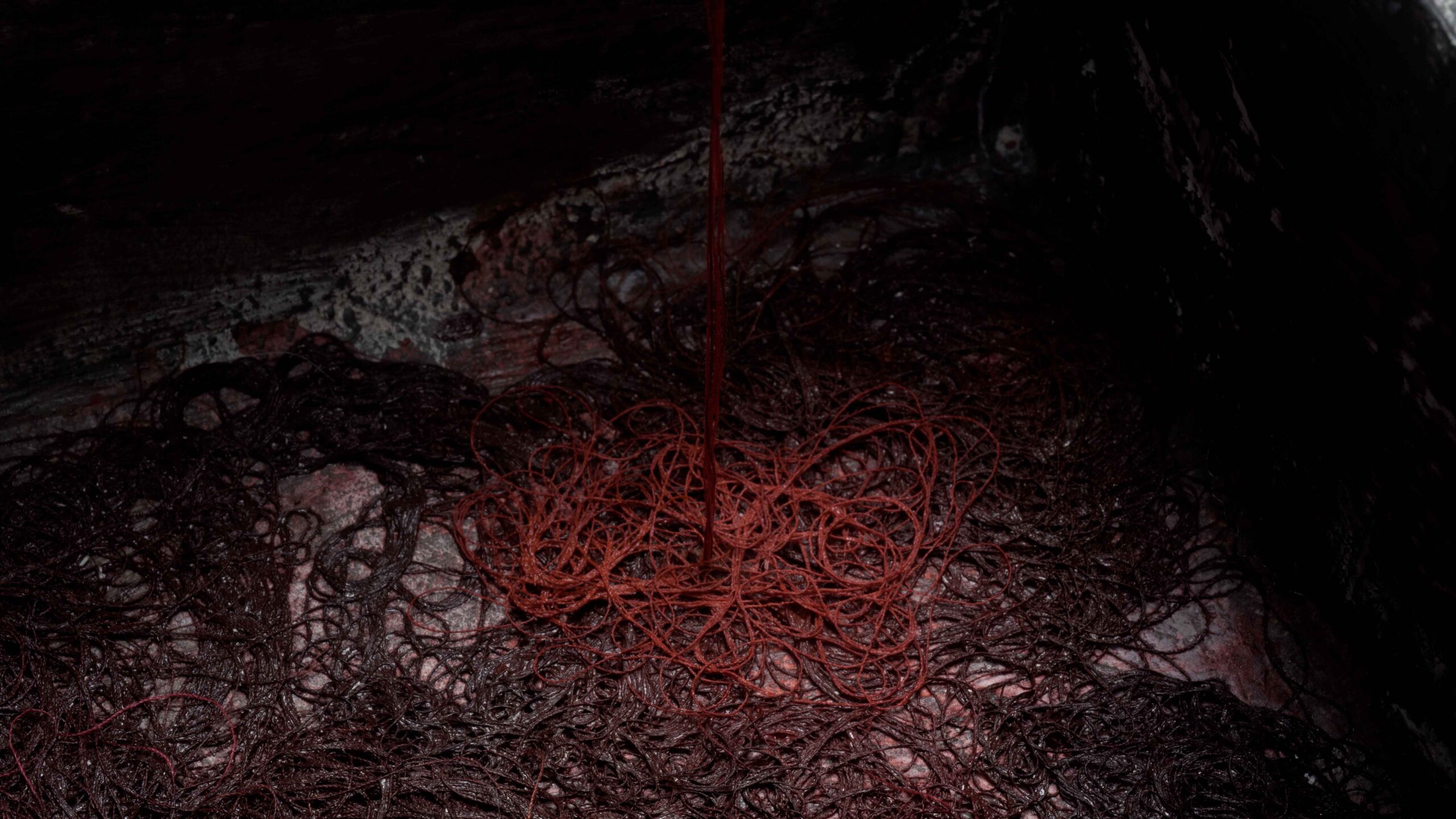
Skinned
Perhaps surprisingly, then, Skinned began life as a work for children. A reflection of Hérissé’s work in the industry? “Maybe,” he answers with a slow shrug of the shoulders, as though the idea remains a mystery even to himself. Targeting an adult audience freed him to address the darker themes that troubled him. But although Skinned isn’t for children, its creator insists that it’s a conte. A genre famously difficult to define, the conte covers everything from fairy stories to dark folktales and much else besides. In Hérissé’s view, the advantage of the conte is precisely its multiplicity. “It uses symbols and fantastic images to create something that escapes straightforward interpretation. That’s why psychoanalysts have spoken so much about it, and why people respond in such different ways to the form.”
Hérissé tells me that audiences have advanced wildly different views about his film. Some interpret it as a fable about toxic relationships. Others see a representation of the horrors of incest. Still others perceive Skinned as a plea for animal rights. How does Hérissé respond? “I always share with viewers my own intentions behind the film,” he says. But he never tries to correct them, or to change their interpretations. “If anything, it just shows that I found the right balance. I wanted to make something that could be read in many ways, appreciated by different people, something universal.”
There’s more to come from Hérissé and the dark world of Skinned. He is currently working on an animated horror anthology called DOLLS, set in the same visual universe as his stop-motion short. In the meantime, he has written the narrative for a graphic novel, The Stone (in French, Le Caillou), in collaboration with Marion Bulot and out in April with publishing house Dargaud. He was struck by the comparative freedom the graphic novel gave him. “The story was approved in two minutes, and off we went,” he says, smiling ruefully, evidently mindful of the often tortuous and torturous process that filmmaking requires. I ask if that liberty reminds him of his early passion for 3D animation, that autodidact’s leap towards creative freedom. Reflective as always, Hérissé responds at first with a quick shrug, a brief furrow of the brow. His hands reach forward to better grasp the question. When the nuanced answer follows—each medium offers unique freedoms and constraints—I’m left once more with the impression of a filmmaker in whom ease and caution, conviction and doubt are fused like conjoined twins.
Skinned was nominated for the New Critics & New Audiences Award at Filmfest Dresden by Laura Stöckler, Magdalena Steiner, Simon Schäfer, Ionna Micha, Sophia Rentsch and María Alderete, the participants of the European Workshop for Film Criticism #1.
All six nominated films are available to watch from February 7 to 21, 2024. Create an account to vote for your favourite film. The winner receives a cash prize of €1000,-. Participants can win a one-year subscription to This Is Short, the European streaming platform for short films.
New Critics & New Audiences Award is a project by the European Network for Film Discourse (The END), hosted by Talking Shorts, and funded by the Creative Europe MEDIA Programme. With the support of This Is Short.


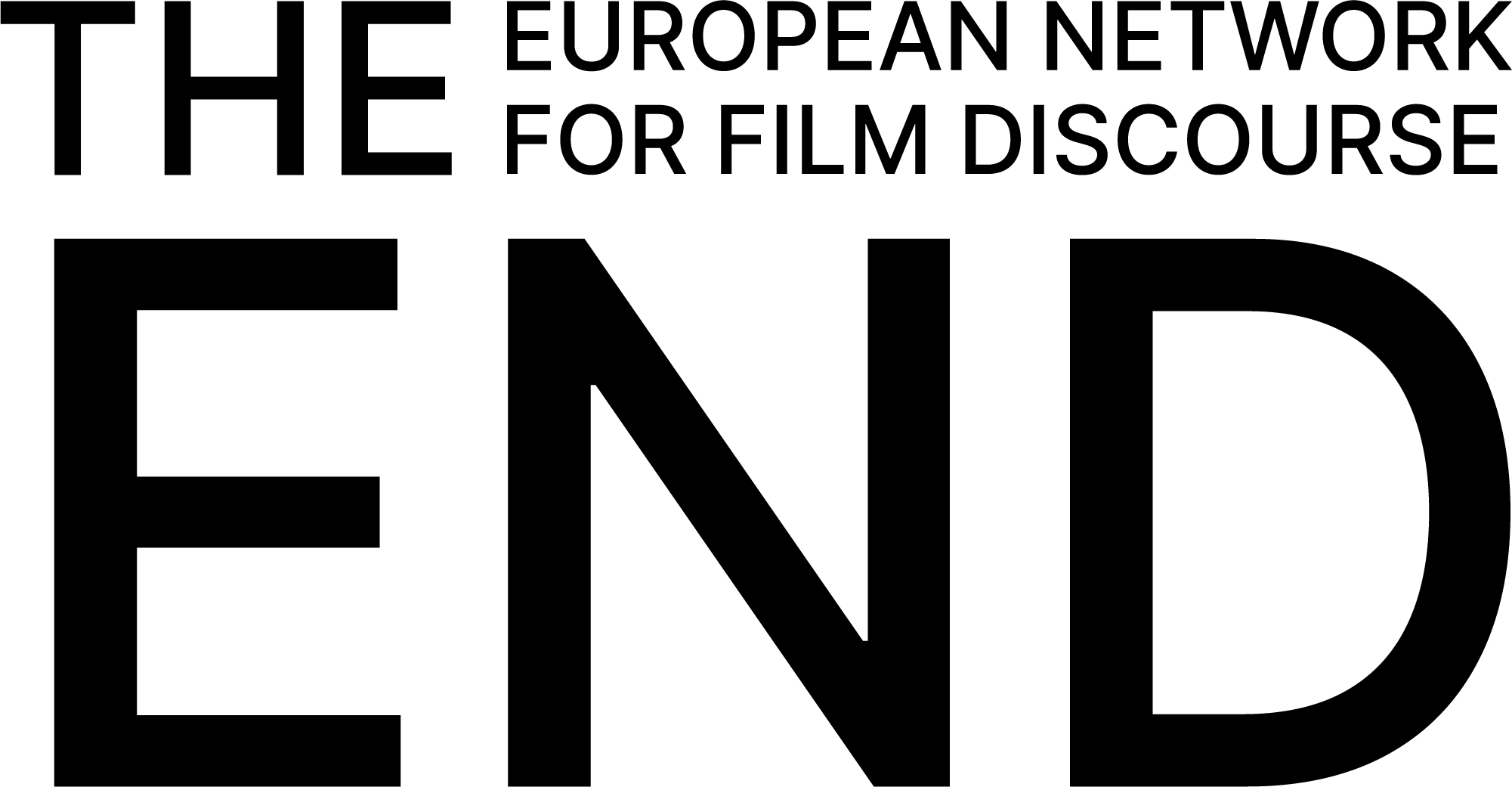



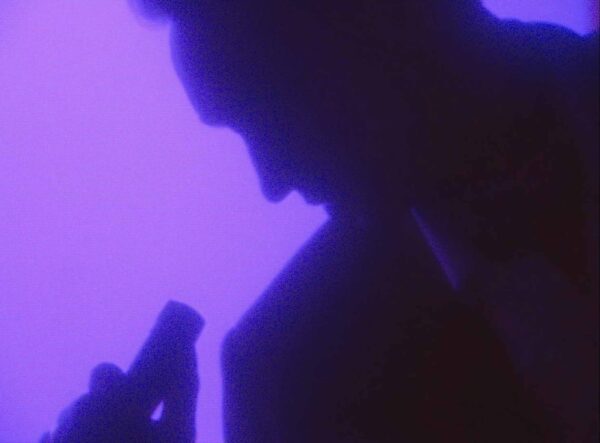
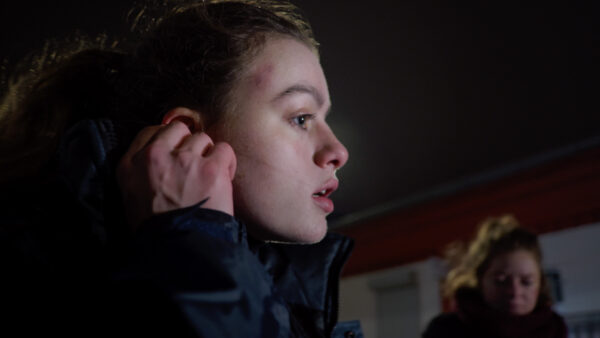
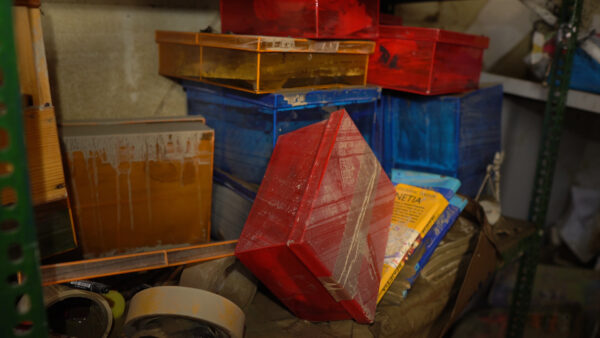
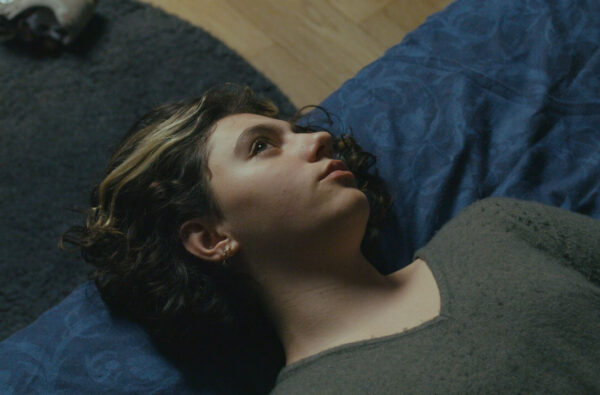
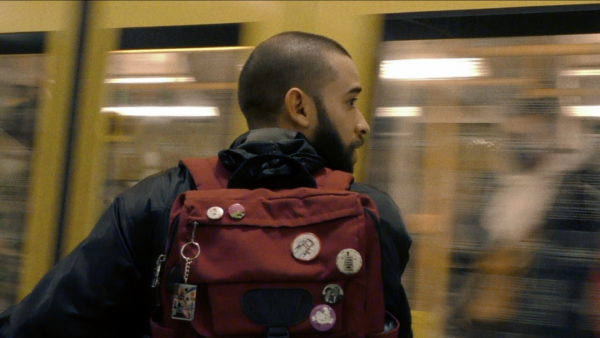
There are no comments yet, be the first!